
Malawi’s wildlife renaissance


The matriarch pauses for a moment – trunk raised, head held high – before she takes the first steps into her new home. At the behest of her gentle rumbles, the rest of the herd follows, and, in a few short minutes, the elephants have melted into the woodlands of Nkhotakota Wildlife Reserve. Where once these woodlands were at risk of falling silent forever, she and her family are there to breathe new life into the reserve. They are the emissaries of Malawi’s wildlife renaissance and the protagonists of Nkhotakota’s bright new chapter.
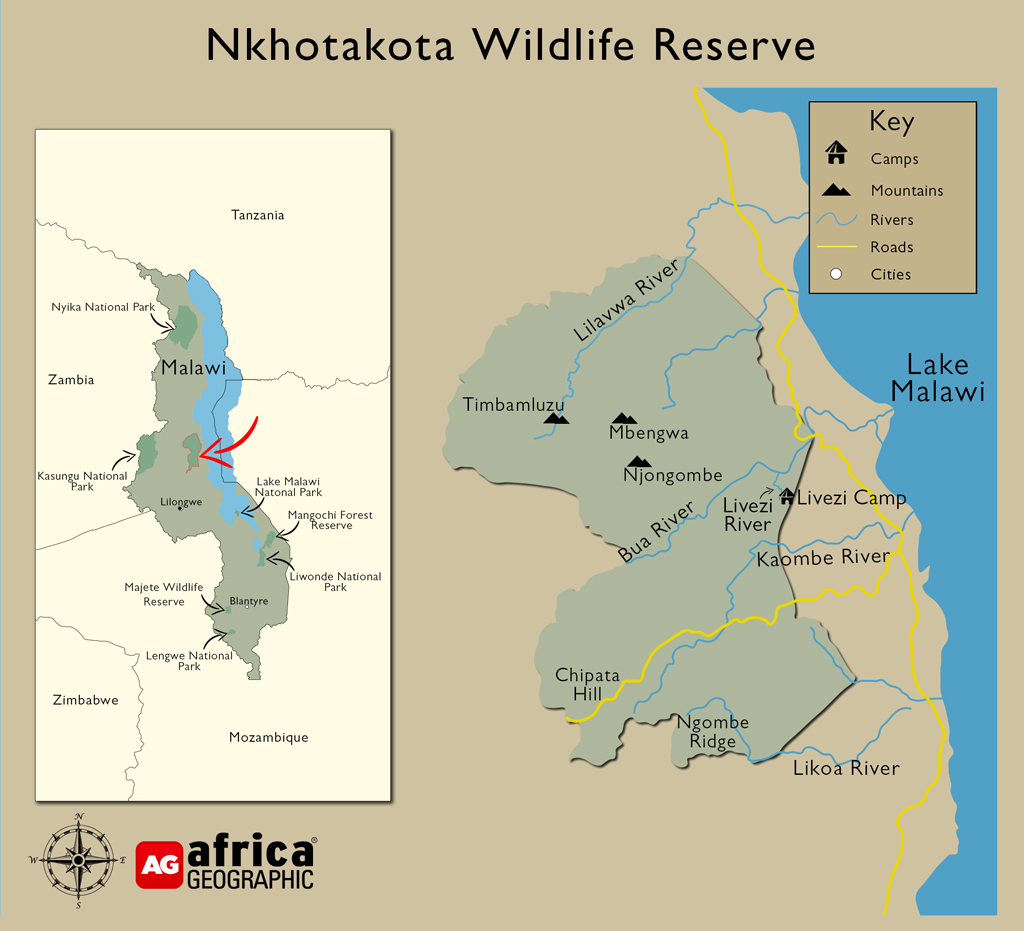
Nkhotakota Wildlife Reserve
Nkhotakota Wildlife Reserve is Malawi’s oldest and largest reserve and encompasses 1,800km2 (180,000 hectares) of wild and rugged terrain. It extends east from the edge of the escarpment of the Great Rift Valley and stops just five kilometres short of the shoreline of Lake Malawi. From high in the mountains, rivers and streams plunge inexorably downwards towards the freshwater lake, cutting deep valleys and yawning caverns into the earth before reaching the plains below. In Nkhotakota, these waterways dissect the reserve, weaving through rough outcrops and rock-strewn ridges and bringing life to its inhabitants.
Dense but characterful miombo (Brachystegia) woodland covers most of the reserve, interspersed by dambos (shallow wetlands) and stands of lush grassland, which give way to the thick riverine forest along the rivers. Looming above it all, Chipata Mountain reaches an elevation of 1,614m, with a small patch of rainforest at its peak.

The reserve is surrounded by a substantial population of some of Malawi’s most impoverished people. When it fell into a state of neglect, the abuse of its natural resources was inevitable. Dwindling tourism meant negligible revenue was available for reserve upkeep and security, a vicious cycle resulting in charcoal burning, logging and poaching. From an estimated 1,500 individuals, Nkhotakota’s elephant population numbered just 100 at the start of 2015.
But Malawi’s conservation journey in recent years has been a triumphant one, and Nkhotakota is just one of its successes. Today, the reserve offers the perfect escape for elephant and nature lovers– a rugged piece of Africa at her most raw and beautiful, removed from the indignities of mass commercial tourism.
 Find out about Nkhotakota for your next African safari. We have ready-made safaris to choose from, or ask us to build one just for you.
Find out about Nkhotakota for your next African safari. We have ready-made safaris to choose from, or ask us to build one just for you.
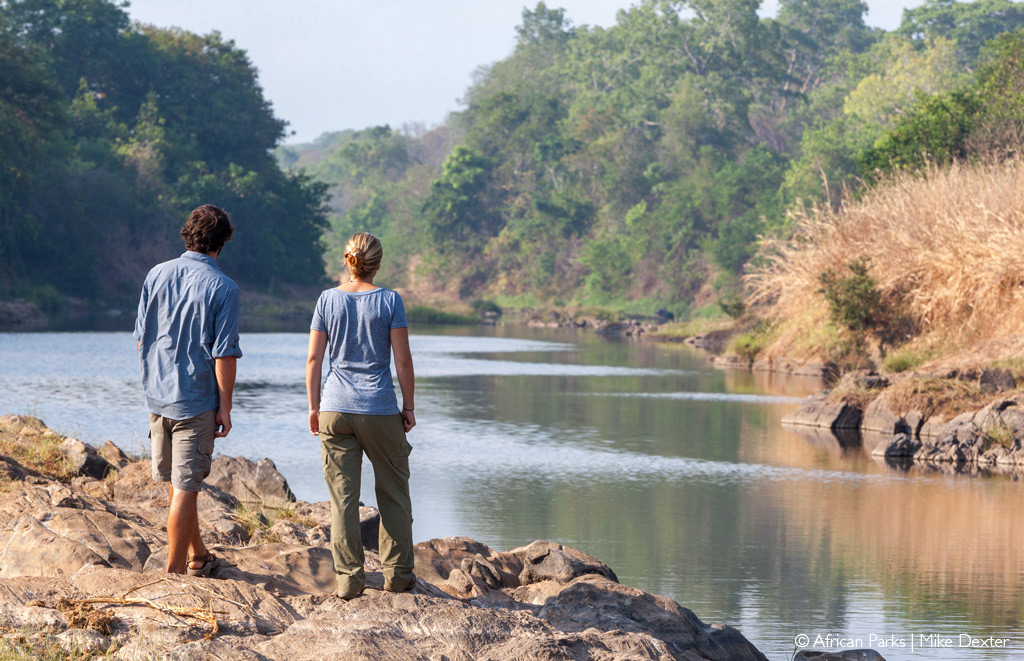

The agents of success
The reserve’s revival can be attributed to a partnership between the non-profit organisation African Parks and Malawi’s Department of National Parks and Wildlife. Buoyed by the success of their work in Majete Wildlife Reserve, African Parks assumed managerial responsibility for both Liwonde National Park and Nkhotakota Wildlife Reserve in 2015.
Their first task was to repair the relationship between the reserve and local communities while ensuring the safety of both. Thus, the erection of a fence around the reserve became a priority, which was immediately executed after careful consultation with relevant community stakeholders. Within the perimeters of Nkhotakota, a smaller sanctuary was established as a more manageable region for initial restoration efforts. This inner sanctum has since been extended over 80,000 hectares of the reserve to include the Bua River.
Next came repairs to the reserve’s existing infrastructure and improvements to the road network, along with an overhaul of its law enforcement and anti-poaching efforts. With the help of community teams, law enforcement teams have collected hundreds of wire snares, filled in existing pit traps and confiscated several illegal firearms. Increased staffing and reserve coverage, improved training and upgraded equipment have resulted in a 50% decline in criminal activity since 2015.
 DID YOU KNOW that African Parks offers safari camps (lodges and campsites) where 100% of tourism revenue goes to conservation and local communities? Find out more and book your African Parks safari.
DID YOU KNOW that African Parks offers safari camps (lodges and campsites) where 100% of tourism revenue goes to conservation and local communities? Find out more and book your African Parks safari.
There are believed to be over 100,000 impoverished people living within a few kilometres of the reserve’s boundaries, and, for the first time in decades, they are beginning to experience the benefits of their country’s heritage. In 2021, 215 scholarships were awarded to orphaned and vulnerable school children, and every year, around 400 children are brought into the reserve on environmental education outings. Older community members are permitted to harvest park resources (such as palm fronds and wild fruits) in a sustainable manner under the Resource Use Programme, the rules of which are implemented in agreement with local leaders. The Nkhotakota District Community was also established to discuss the reserve, conservation, and human-wildlife conflict and as a platform for residents to air their views.
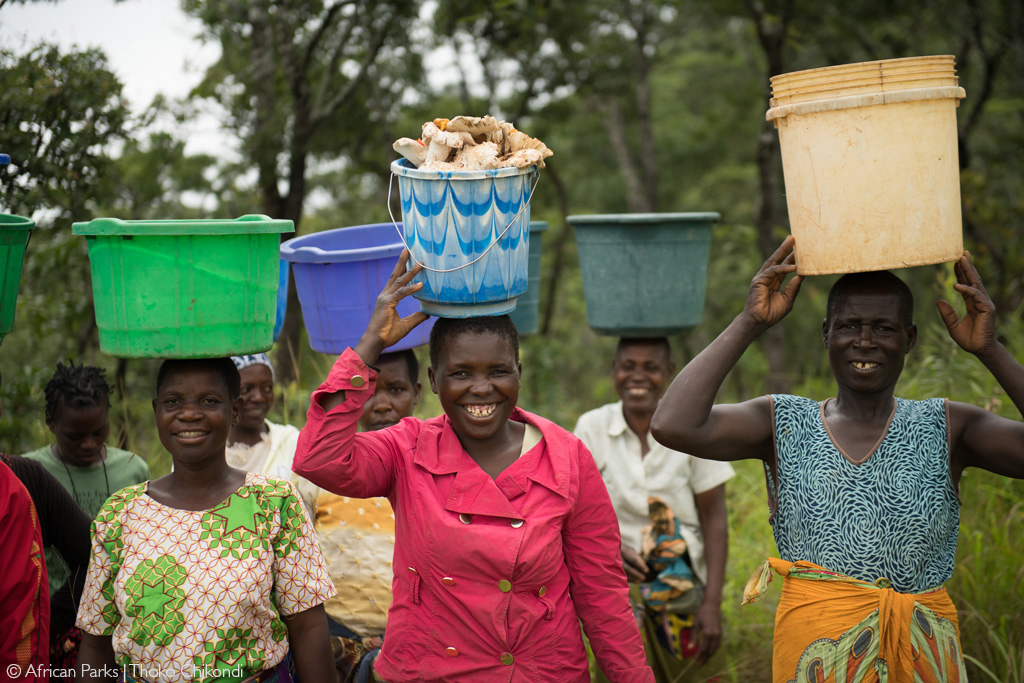
500 (ish) elephants
No two parks are the same, so management plans must adopt an adaptive and comprehensive long-term vision. With Liwonde and Nkhotakota, African Parks inherited two regions with vastly different challenges. Historically, Liwonde had always supported a very healthy population of elephants, and with increased park security, it was proliferating and placing pressure on the park’s ecology. So too, in Majete, elephants were flourishing. But Malawi is a relatively small and densely populated country with scant options for wildlife corridors and dispersal. So it was that the historic “500 Elephants” operation was conceived.
From July 2016 until August 2017, over 520 elephants were translocated from Majete and Liwonde to Nkhotakota. Like proverbial ducks to water, the elephants quickly adapted to their new home. Even before the operation was complete, newborn elephant calves were taking their first stumbling steps in Nkhotakota. There are now well over 620 elephants in the reserve, filling the woodlands with the sounds of cracking branches and trumpeting once again.
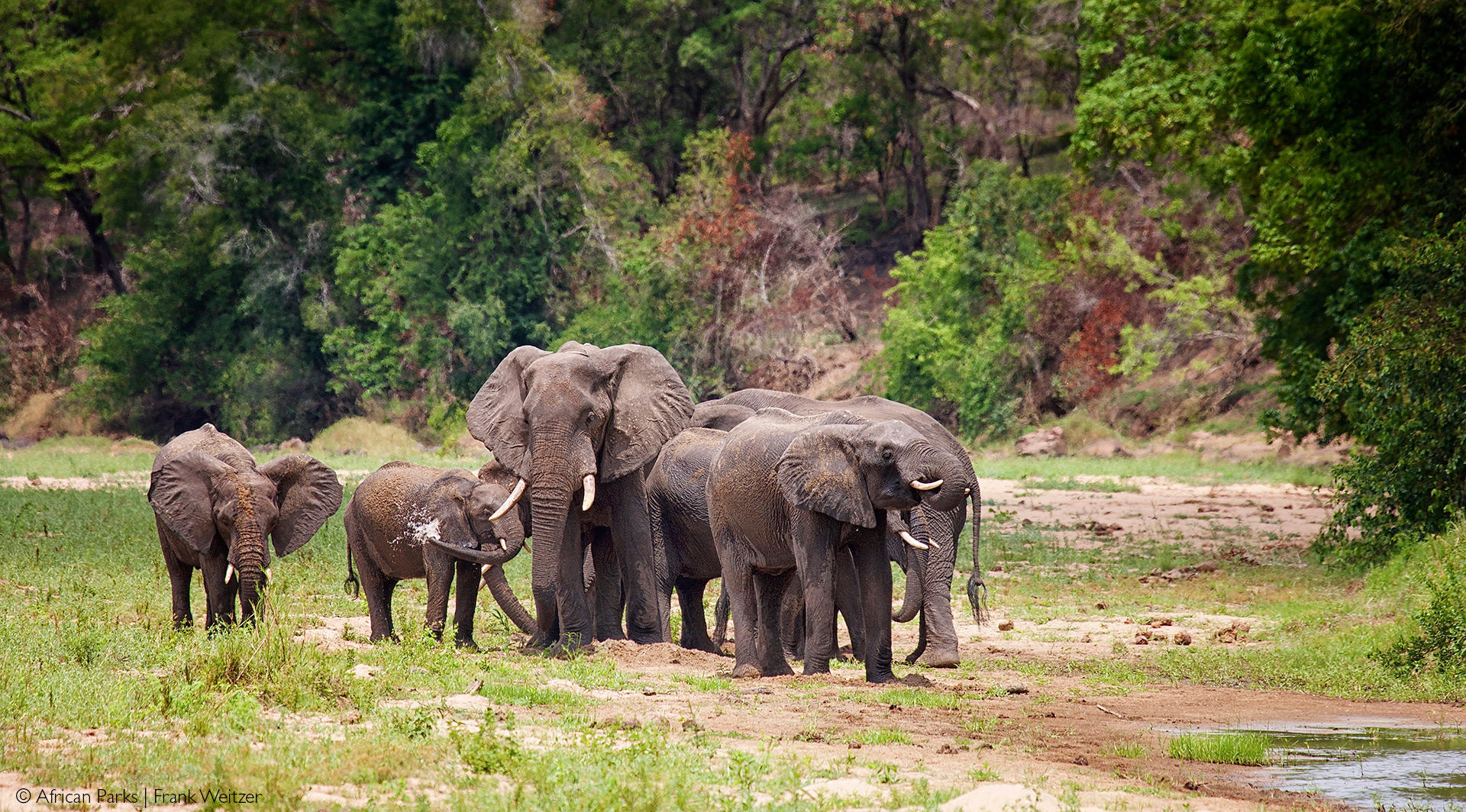

And thousands more
Several thousand tonnes of transported pachyderm and a red-headed royal hogged the media limelight at the same time that 2,000 other animals, including sable antelope, eland, impala, buffalo, waterbuck, impala and warthog, made the journey to restore Nkhotakota’s wildlife.

Several canny but increasingly relaxed leopards have gradually revealed themselves to lucky guests. A camera-trap project recently confirmed the presence of roan antelope and honey badgers, which were believed to be locally extinct. And for the chiropterphiles (we know this is not a word, but there should be a word for bat enthusiasts), Nkhotakota is the only place in Malawi where the lurid orange rufous trident bat can be spotted. Naturally, the return of other iconic animals such as black rhino, lion, cheetah and African wild dog (painted wolf) is a distinct possibility.
280 bird species have been recorded in the reserve, but this number is expected to increase dramatically with further exploration. For birders, discovering a previously unrecorded species must undoubtedly be an attractive prospect! As would the search for the Taita falcons believed to be breeding along the escarpment.
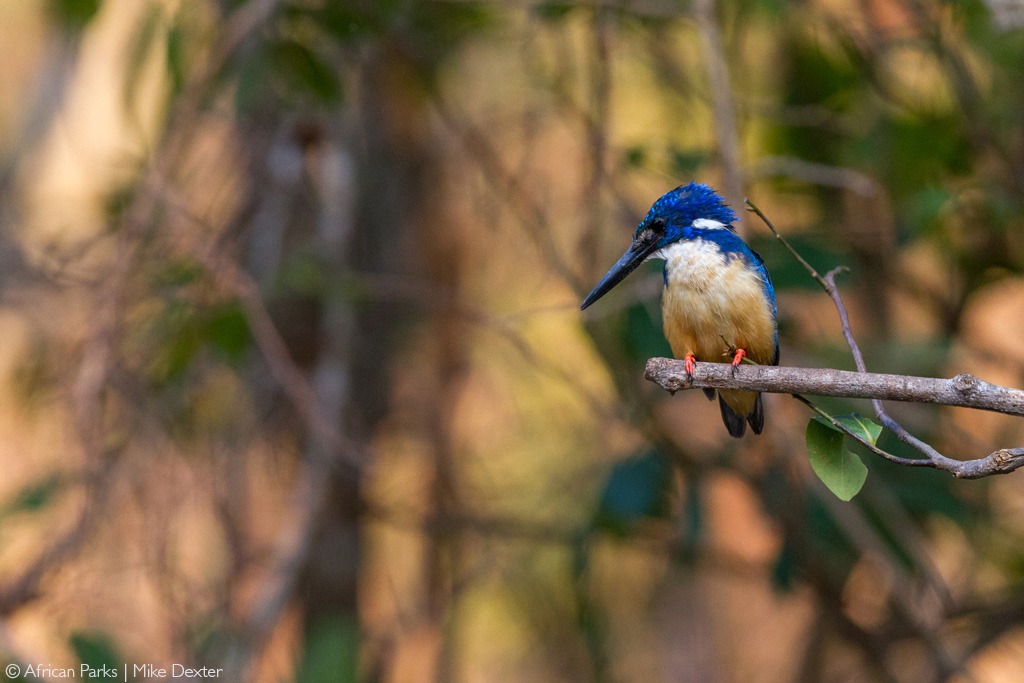
Explore & stay
A charm can be found in Nkhotakota which few wild spaces offer. Its austere beauty, tumbling rivers, and dappled paths are an escape to a piece of untamed Africa that is far off the traditional safari track. With the hard work of African Parks and Malawi’s burgeoning popularity as a safari destination, there is little question that the reserve’s future is bright. To be able to experience a part of that journey and to see and feel conservation happening around one in real-time is undoubtedly a privilege.
While game drives are an essential part of the experience, being on foot in the company of expert guides is the best way to explore the untrammelled wilderness. For those feeling particularly energetic, it is also possible to hike up Chipata Mountain and breathe in the majesty of this unique reserve. At certain times of the year, it is possible to follow the path of the Bua River by canoe.
For all its wild feel, there are lodges in Nkhotakota on par with any high-end luxury lodges across the continent. These are discretely hidden in the woodlands, facilitating a total immersion and escape to nature. For those travelling on a tighter budget, there are campsites, and the reserve permits self-drives. Alternatively, Livezi Camp is a self-catering camp featuring four ensuite tented chalets (canvas and stone) that sleeps 8-12 people in total (up to 3 per tent). The thatched central area – dining and kitchen – overlooks the non-perennial Livezi River.

The best time to visit is during the dry season, which runs from April to October, as the animals are drawn to available water. However, September and October can be sweltering and are best combined with a few days of cooling off in the waters of nearby Lake Malawi. The heavy rains from November until March can damper activities, but the spectacular storms over the escarpment or the lake are breathtaking.
Check out this video on Nkhotakota:

Final thoughts
Of the many attractive attributes of Malawi’s Nkhotakota Wildlife Reserve, its elephants are the true stars. Not only is their history a testament to the work and commitment involved in Malawi’s wild spaces, but their presence is symbolic of the triumphs to come.
To comment on this story: Login (or sign up) to our app here - it's a troll-free safe place 🙂.![]()




